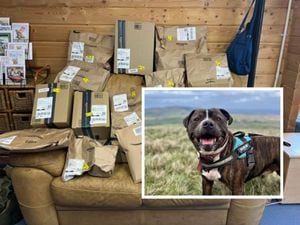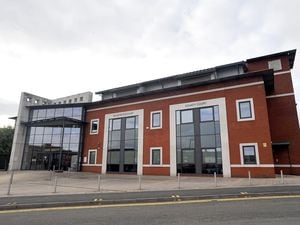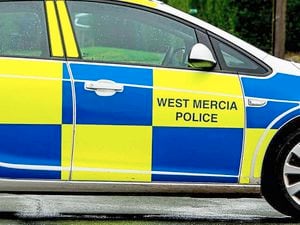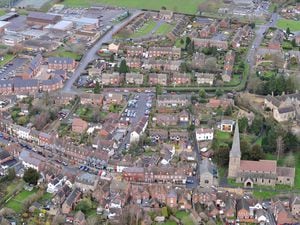Meet 'Dr Enigma': Shropshire man reveals code war secrets
They call him "Dr Enigma." And when Shropshire's Dr Mark Baldwin travels the world giving talks and presentations, he has a star prop that the audiences love.

It's a rare, working, genuine Enigma machine – the tool of Hitler's forces to send military messages in a code so fiendishly complex that they thought it could never be broken.
But they were wrong, as in a top secret operation based at Bletchley Park, Alan Turing and his team famously cracked the code and helped shorten the war.
As he demonstrates the machine, which he carries around in a DJ's metal albums case, Mark isn't precious about letting audiences have a go themselves.
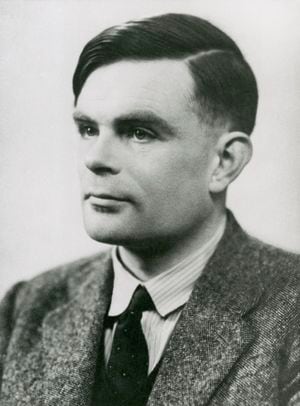
"You have to remember it's a robust bit of field kit and made for fairly demanding conditions," he says.
Many thousands were made, but the numbers surviving in museums and private collections worldwide is reckoned to be in the low hundreds.
Last year his travels took him on a tour of North America, including to some of Silicon Valley's most successful technology companies, with Facebook's headquarters being among the venues.
Mark, who is an academic doctor who taught at Imperial College in London, is a renowned Enigma expert and when the 2014 movie The Imitation Game, which told the codebreaking story, needed a real Enigma machine, he was the man the film-makers turned to.
He's now 74 and lives in Cleobury Mortimer where he ran a second hand bookshop for over 30 years until November 2017.
"Over 20 years ago my attention was caught by a book which had come in called Very Special Intelligence by Patrick Beesly. If you want to sell a book whose title is not clear, you have to have a look at the book to see what it's about. So I looked inside," he said.
"This is the book that changed my life.
"It's about how the Royal Navy used the information coming from Enigma decrypts. I knew nothing about that at all. I thought it was really interesting and that I would read it before I sold it. Then I thought that it was so interesting that I would hang on to the book."
It sparked a fascination in the top secret world of wartime codebreaking and the secret intelligence war and led to him seeking to buy an Enigma machine. A friend looked for him on the internet – Mark was not internet connected at that time – and found one for sale in Denmark.
As for his motivation, he says: "It's the real McCoy, isn't it? If you are interested in something, you like to have some of the original equipment. I thought in conjunction with my public speaking, it would be a draw, and people would be interested to see one."
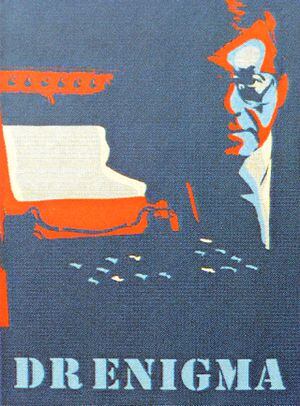
He flew out to Copenhagen but was disappointed to find the machine was missing a vital piece, called the reflector rotor. He doesn't want us to be specific about the machine's cost, but just let's say he could have bought a new car for the same money.
Back in Britain, he managed to get a clock maker and restorer from Edinburgh to make him a new reflector rotor.
Mark knows nothing about the wartime history of that machine, which he later sold.
"Last I heard, it was on display in a museum in New York," he says.
He got another machine about 10 years ago thanks to a book by Richard Belfield called Can You Crack The Enigma Code? which published a coded message and offered a prize of an Enigma machine to the first reader to crack it.
You're thinking Mark won, aren't you?
"I didn't even try it. Nobody won the prize," says Mark. "So he still had a machine he didn't need. So I bought it from him.
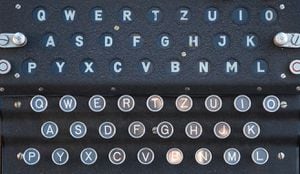
"It's a standard machine of the sort used by the air force and army."
Again, its precise wartime history is unknown.
Mark has given hundreds of presentations, mostly on Enigma and Bletchley Park, but also on other aspects of what might broadly be termed the "secret war".
He's lectured on 12 cruises which have taken him all over the world, and has needed a range of lecturing topics in his armoury.
He makes no claims of significant codebreaking ability himself, although he has a new interest of picking up old postcards which carry coded messages – the codes are generally simple and the messages turn out to be humdrum chat.
"I did a lecture tour to Slovenia, to talk to a hi-tech company called Verity, and they wanted some challenges beforehand – they wanted me to encrypt some messages and see if they could break them.
"I kept sending them more and more difficult ones, and it turns out with high-speed computing power you can break standard Enigma messages without knowing the settings."
Mark's son Sam works for Verity and they have argued over whether this means that modern computers can break the Enigma code.
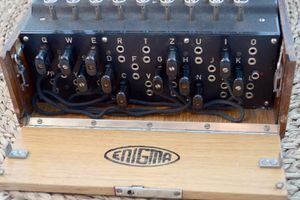
"Although it's wrong to say that no Enigma message can now be broken by a high speed computerised attack, it's also not true to say that any Enigma message can be broken by a high speed computer attack."
The key point is that for a computer to be able to break the code, it has to also be able to recognise when it has the right answer.
Mark's "Dr Enigma" title was bestowed on him for a talk at the "TuringFest" IT conference in Scotland in 2017, and he has embraced it.
Shropshire Star man has a crack at the Enigma machine
Anyway, the Enigma machine, which looks quite like an old typewriter, is in front of me, and time to have a go. The initial setting of the rotors – removable circular discs, with three on this machine, but German naval machines upped the complexity by having four – is 11.15.17.
Press the first key. A light illuminates on the display to give a Q. The rotor turns a notch. Second letter – the V lights up, rotor turns a notch. And so on until we have QVJL UTZI.
Now we pretend to be the person who receives that coded message, which would be transmitted in Morse code. Crucially, they have to know to set the rotors on their machine to the same initial setting of 11.15.17.
Type in the Q, and the decoded letter illuminates. And so on until it is all decoded.
It didn't seem that complicated to me until Mark opens a flap at the front to reveal what looks like an arrangement of lots of old switchboard plugs.
"There's potentially 500 million million ways you can arrange the plugs on the plug board."
By the way, you shouldn't need an Enigma machine to work out what those two four-letter words were that first came to my mind to encode.

